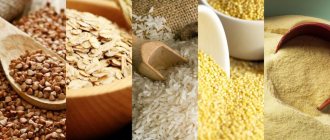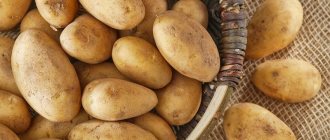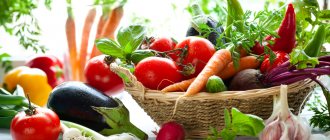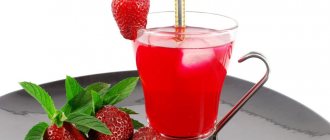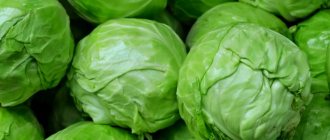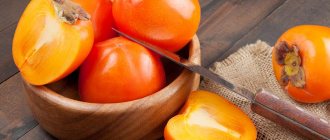Author:
gastroenterologist Anton Smirnov
4 minutes
3948
During breastfeeding, a woman may feel hungry much more often and stronger than usual, and this is normal. The process of making breast milk in the body increases daily energy requirements by about 500 calories. There is also an increased need for specific nutrients such as protein, vitamins D, A, E, C and B12, selenium and zinc.
Here are some healthy and tasty foods that you should include in your diet while breastfeeding, provided that you have no contraindications to them:
- Fish and seafood: salmon, seaweed, shellfish, sardines;
- Meat and poultry: chicken, beef, lamb, pork, liver;
- Fruits and vegetables: berries, tomatoes, sweet peppers, kale, garlic, broccoli;
- Nuts and seeds: almonds, walnuts, chia, flax and hemp seeds;
- Healthy fats: avocado, olive oil, coconut, eggs, full-fat yogurt;
- Fiber-rich starches: potatoes, butternut squash, sweet potatoes, beans, lentils, oats, quinoa, buckwheat. Note that it is recommended to introduce legumes into your diet no earlier than the baby turns three months old in order to avoid problems with excess gas formation;
- Other foods: tofu, dark chocolate, kimchi, sauerkraut.
It is also worth minimizing your consumption of fast food and sugary breakfast cereals, which can be replaced with muesli and granola, for example.
Buckwheat
Very tasty, low in calories, but nutritious. It is for these reasons that it is often used in diets. There are practically no allergies from it, so it is allowed almost immediately after childbirth. In addition, buckwheat contains a large amount of iron, due to which it helps to raise hemoglobin, which after childbirth (and, consequently, blood loss) is relatively low.
The fact that buckwheat has a slight laxative property can be both positive and negative. This should be considered strictly individually, based on the state of your digestion and the baby. You shouldn't consume this porridge too much. Excess may cause dizziness and general weakness.
Let's break it down into its components!
Shchi is a dish of traditional Russian cuisine, which includes white cabbage, potatoes, onions, carrots and herbs. Cabbage soup can be cooked in meat broth or be vegetarian.
So, let’s “cook” cabbage soup according to the classic recipe, and at the same time we’ll look at each ingredient of the soup separately - which of the components of this dish may cause concerns for nursing mothers, and whether they are justified.
If you are not a vegetarian (and lactating women, even in the old days, were allowed to eat meat during Lent), then it is better to cook cabbage soup in broth - meat or fish. For the broth, take 500 g of lean meat (beef, chicken, rabbit or turkey), rinse it in running water, put it in a saucepan and pour 3-4 liters of cold water. You shouldn’t put meat in boiling water, because we need rich broth, not boiled meat for the second course. Place the pan over high heat and let the water boil. If necessary, skim off any foam that forms on the surface with a slotted spoon and reduce the heat slightly so that the water does not boil too much. As soon as the foam stops forming, reduce the heat to low and add 2-3 pieces to the pan. bay leaf, small parsley root, cover with a lid and cook the meat for about another 1-1.5 hours. Boiled meat can be cut into portions and left in cabbage soup, or can be used to prepare a second course for lunch.
While the broth is cooking, prepare the remaining ingredients for the cabbage soup:
- Peel the carrots and onions. Finely chop the carrots or grate them on a coarse grater. Chop the onion into small cubes. Heat a frying pan, pour 2-3 tbsp onto it. vegetable oil, add carrots and onions, fry until half cooked (approximately 2-3 minutes).
- Add 1 tbsp to the fried vegetables. tomato paste or 2 small pureed tomatoes, stir and continue frying for another 5-7 minutes, remembering to stir the vegetables periodically.
- Peel 3-4 small potatoes, wash them and cut them into approximately 1.5 cm cubes.
- Chop 500 g of white cabbage into strips or small squares.
- Place the prepared cabbage and potatoes into the broth and bring to a boil. When the soup boils, add the prepared frying - a mixture of onions, carrots and tomato paste - and simmer over low heat for another 15-20 minutes.
- Rinse half a bunch of greens (to taste) in running water and chop finely.
- Peel 2-3 cloves of garlic, chop and grind with 1 tsp. salt into a paste.
- Remove the bay leaf and parsley root from the soup - during cooking they have already given up all the necessary aromas and nutrients and are now no longer needed. Salt the soup, but don’t add too much salt, since you haven’t used the prepared garlic and salt yet. It’s better to under-salt the cabbage soup a little than to over-salt it.
- Turn off the heat, add the garlic and chopped herbs, mashed with salt, and cover with a lid to let the cabbage soup brew. In 5-10 minutes, the greens and garlic will have time to steam in the hot soup and, saturating the cabbage soup with aroma, will retain the maximum of their nutrients and vitamins.
- Serve the finished cabbage soup with sour cream or cream. Mayonnaise for a nursing woman is out of the question!
Meat must be included in the diet of a nursing woman - it is an important source of proteins that will provide the mother with energy, provide “material” for the formation of milk, and ensure normal development and growth for the baby.
Some breastfeeding women try to avoid onions in their diet, as they can impart a bitter taste to the milk (the baby may refuse to breastfeed). However, there is not much of it in the soup, and besides, it undergoes culinary processing, which changes its taste, but its benefits remain (it effectively protects against viral infections).
Carrots are useful during breastfeeding and after childbirth. Everyone knows about its benefits for vision. It also helps maintain or restore the beauty of skin and hair. However, in order not to harm the baby (carrots are classified as allergenic foods), it is better to eat them after cooking, and this is exactly what happens when cooking cabbage soup.
Vegetable oil is not contraindicated during breastfeeding, so you don’t have to worry about this ingredient.
Tomatoes are a very healthy product that contains many nutrients (including vitamin C, which strengthens the immune system), improves blood composition and helps fight the formation of blood clots, as well as stress (strengthens the nervous system). However, tomatoes contain lycopene, a substance that can cause allergies in children. If your toddler reacts to red tomatoes, then replace them with yellow ones or cook cabbage soup without tomato paste or tomatoes. The soup will not suffer from this, it will just be a little “paler”.
Potatoes are on the list of permitted foods during breastfeeding and therefore should not cause any concern for the baby’s health.
Cabbage is perhaps the most controversial cabbage soup product. It is not recommended for use in the diet of a nursing woman until the baby is 4-6 months old. This is due to the fact that the vegetable is difficult to digest and absorb by the baby’s fragile body, and this provokes bloating and colic in babies. However, the aggressive properties of cabbage are somewhat exaggerated and apply to a fresh vegetable. In addition, they can be “softened” if the vegetable is lightly stewed first. Heat treatment will speed up its absorption, but will not destroy the beneficial substances of cabbage. By the way, this applies not only to white cabbage, but also to cauliflower, broccoli, kohlrabi and other types. Scientists have proven that boiled or stewed cabbage cannot harm the baby’s health (even if the mother experiences slight fermentation in the intestines after eating it), because the baby does not consume cabbage soup itself, but mother’s milk.
In addition to fresh cabbage, sauerkraut can be used for cooking cabbage. Unfortunately, it is best to avoid such cabbage during lactation, as it contains salt, acid and often other aggressive spices. If we still haven’t convinced you of the safety of cabbage in cabbage soup, then it can be replaced with some types of greens - spinach or sorrel.
Greens are a component of many soups and are used in them not only for decoration when serving, but also to give them a refined taste and aroma. Parsley is rich in minerals and vitamins (A, B, K and especially vitamin C). She simply must be in the diet of a nursing woman. In addition, this greenery can relieve the onion present in cabbage soup from the unpleasant odor. Dill is also necessary for a nursing mother, and not only because it helps cope with colic in the baby, but also as a lactation stimulator.
Garlic is one of the vegetables that can be consumed (wisely) even during lactation. In addition to vitamins, it contains natural antiseptics - phytoncides, which protect our bodies from viral infections, and the baby needs a healthy mother.
Rice porrige
Rice is a very useful product in that it perfectly cleanses the body, acting on it as an absorbent (that is, absorbing harmful substances). It normalizes sleep, improves the condition of hair and skin. Useful for kidney and heart diseases. Since rice is a source of slow carbohydrates, it is perfect for the diet. Its energy is released gradually, giving a feeling of satiety and increased strength for a long time. Hypoallergenic product.
It is also controversial that it has a fixing effect. People suffering from constipation should be careful with it and consume it no more than once a week.
How to properly consume porridge during lactation and where to start
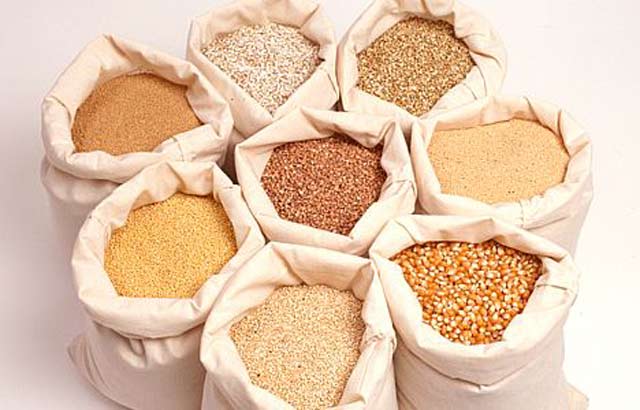
As a rule, young mothers begin to eat porridges while still in the maternity hospital. Most often these are dishes based on buckwheat. Therefore, the continued use of this product becomes a given.
My baby had a rash from everything, for the first two months I only ate unsalted buckwheat with water and boiled turkey, they made different diagnoses, it turned out to be an immature enzyme system.
Julia
https://www.baby.ru/blogs/post/278256872–193341088/
Regarding the order of inclusion of other cereals and cereals in the menu of a nursing mother, the following should be noted:
- The introduction of such dishes into the diet should occur gradually, over 2-3 days. It is important to carefully monitor your child’s reaction to the product.
- The initial portion should not exceed 50 g; over time, in the absence of negative consequences for the baby, the amount of consumption per day increases to 150 g.
- If a child develops an allergy in the form of rashes or redness on the cheeks, as well as colic and worsening stools (with greens or even mucus), you should immediately stop using the product. Try to reintroduce the same porridge into the diet after a month.
- It is important to replace salt and sugar in the dish with vegetables and fruits to improve the taste of the porridge.
- In the first 4–5 months after birth, it is better to cook porridge in water rather than milk. Because cow's milk protein is a strong allergen. And besides, the mineral composition of some cereals (for example, buckwheat) is poorly compatible with the substances contained in milk.
The timing of introduction into the diet of a nursing mother varies depending on the types of cereals:
- In the first three months after giving birth, it is better to include gluten-free porridges on the menu - buckwheat, rice, corn.
- From the third month of your baby’s life, you can try introducing lentils. It is better to start getting acquainted with the product by cooking the broth or boiling no more than 2-3 beans.
- In the fifth month, semolina is introduced in small quantities and no more than once a week in order to diversify the menu.
- From the sixth month after the baby is born, there is a possibility of eating peas without negative consequences for the small tummy.
Thus, it is best to consume porridge without harm to the health of the mother and child, taking into account the absence of an allergy to gluten:
- Buckwheat.
- Corn.
- Oatmeal.
- Barley.
- Millet.
- Wheat.
- Pumpkin.
The following should be included in the diet in small quantities and consumed as rarely as possible:
- Rice.
- Barley.
- Peas and legumes.
And refusing to eat the following types of cereals will only bring benefits to both the nursing mother and the baby:
- Semolina.
- Hercules, especially quick-cooked, with the addition of flavor enhancers and dyes.
Oatmeal
Oatmeal is quite high in calories, but it is recommended by nutritionists. This happens for the reason that it contains a lot of carbohydrates, which quickly saturate the body and are slowly consumed, that is, a feeling of satiety remains for a long time. It cleanses the skin well, giving it natural beauty. Thanks to the beta-glucan it contains, it helps fight cholesterol plaques. It fights well against fatigue, drowsiness, and improves appetite.
Gluten, which is contained in this cereal, is unfavorable for a newborn, so you should abstain from it in the first month. It is contraindicated for kidney disease. Excessive amounts of oatmeal flush calcium from the body.
Benefits and precautions when using cereals
Cereals are good to eat daily. There is a ban on the use of pea porridge, as it can cause a lot of discomfort to the child. This also applies to corn porridge.
To understand how and why cereals can be useful, you can consider each product in a little more detail individually:
Buckwheat
Contains vitamins from group “B” and “E”, it has a lot of phosphorus and amino acids. Also, buckwheat porridge is rich in safe protein, potassium and magnesium.
The composition of Greek milk is easily digestible, helps during anemia, improving lactation, the condition of hair, skin or tooth enamel. It is recommended to consume buckwheat with milk or prepare simple buckwheat milk soup.
Oats (rolled oats)
A distinctive feature of the cereal in question is that it contains a lot of fiber. Oatmeal can cleanse the body of a large amount of toxic substances accumulated over time. It can remove a lot of toxins, strengthen the immune system, and help during stress. Oatmeal can provide many benefits to the digestive system.
For nursing mothers, this porridge will be useful for breakfast along with cheese, apples and other dried fruits.
Contraindications include that if an allergic reaction to gluten occurs, as well as heart and kidney failure, it is recommended to exclude oatmeal from the diet, or use it very rarely.
Millet (millet porridge)
Millet porridge contains a lot of vitamin D; it is important in the development of a child and is well resistant to rickets, jaundice and scrofula.
The composition contains many useful components, such as sodium, magnesium, potassium.
Millet helps to cope with constipation; it will be useful for both mothers and babies.
Wheat porridge
Wheat porridge contains a lot of vitamins from group “B”, as well as vitamin PP. If you notice problems with the heart, then wheat porridge can help by improving blood circulation and strengthening memory. It is worth noting that this cereal strengthens the body’s immunity well.
If, based on personal preferences, you don’t like cereal, then you can replace it with wheat flakes. It is important that they are not glazed with powdered sugar.
Rice porrige
The composition contains vitamins that are contained in the group “B”, “E” and “H”. As for microelements, rice porridge contains a lot of sulfur, phosphorus, magnesium, iron, fiber and amino acids. Not only porridge is prepared from rice cereal, but also soup, salad, pilaf, puddings and much more. Rice cereals and dishes made from it help with diarrhea, cleanse the mother's body, strengthening nerves and cells. The composition has its own energy value and perfectly helps get rid of fatigue and stress.
There are certain contraindications: when there are frequent problems with bowel movements in the form of constipation, the heart vessels and the heart itself are not in order, it is important to limit their use.
Semolina
Semolina contains vitamins from group “B”. Vitamin E, which is beneficial for the skin, is also present. Microelements – calcium, magnesium, sodium, iron, phosphorus. For the information of a large number of mothers, it is worth noting that this porridge is not recommended for those mothers who are trying to lose weight. If you are allergic to gluten, do not eat semolina. However, semolina porridge is considered one of the healthiest. It is recommended to use it more for those who have problems with etching.
Corn grits
Corn porridge contains many vitamins B, A and E. The composition contains many vitamins and fiber, which are beneficial for the development and growth of infants.
If you don’t want to eat corn porridge, then replace it with corn flakes, without any flavoring additives. Corn porridge helps with frequent constipation, effectively removes toxic substances, improves hair and skin condition.
Millet porridge
This is a very healthy cereal, it has a large number of “pluses”. It has a beneficial effect on hematopoiesis and liver activity. For diabetes, obesity, cholesterol plaques, etc., this porridge is on the therapeutic diet menu.
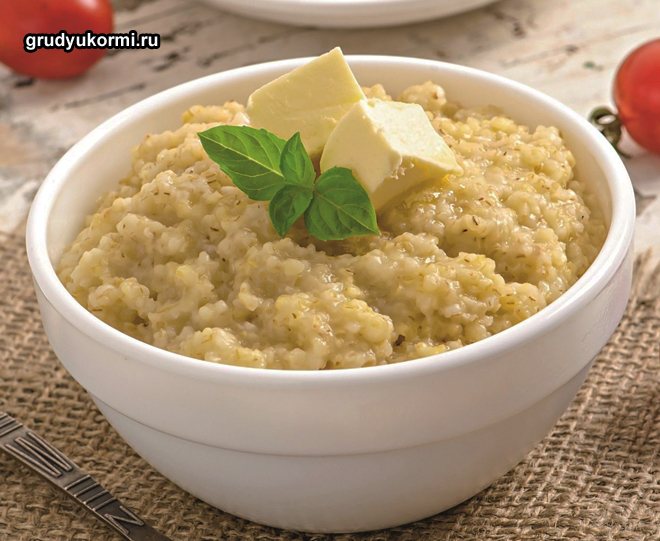
But at the same time, it is prohibited in cases of low stomach acidity and certain diseases of the thyroid gland (hormones).
Useful properties of bread
The healing qualities of baked goods have been known for a long time. Bread during breastfeeding gives strength, health, energy, and is rich in:
- complex carbohydrates, which provide energy and keep the body feeling full for a long time;
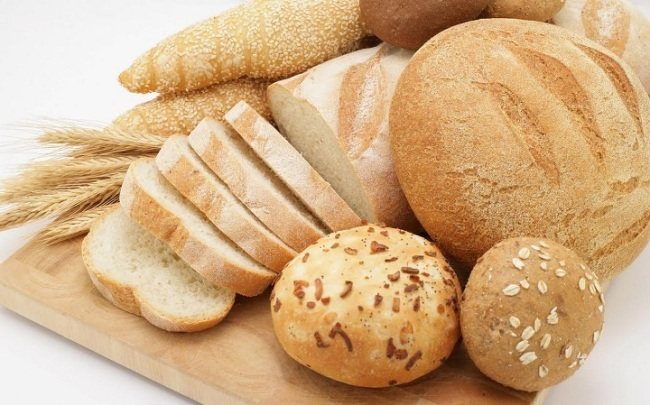
- fiber, which has a positive effect on the digestive organs and nervous system;
- protein, which promotes cell renewal and contains essential amino acids;
- B vitamins, essential for the human nervous system, helping to resist stress, improving the overall emotional state.
However, the healing qualities of bread depend on the type of flour, so not all baked goods are healthy. For example, white bread is inferior in vitamin content to black bread.
Bakery products also have a positive effect on a woman’s appearance: they improve the condition of the skin, hair, and nails. Considering the benefits for the figure and health, it is necessary to include baked goods in the diet of a nursing woman. But it is important to follow the dosage, since bread also has harmful properties.
Semolina
Semolina is considered the most useless porridge. But at the same time, it is recommended to eat it during the recovery period after operations. It is also useful for kidney diseases.
Some people believe that semolina helps you lose weight. But this is not so, on the contrary, she is gaining kilograms. It is very high in calories. In addition, it flushes calcium from the body, which has a bad effect on the condition of the bone skeleton. The gluten it contains in large quantities often causes allergies. At this time, according to the latest research, this porridge is not recommended for infants - up to 1 year old, and for nursing mothers - up to 6 months of age.
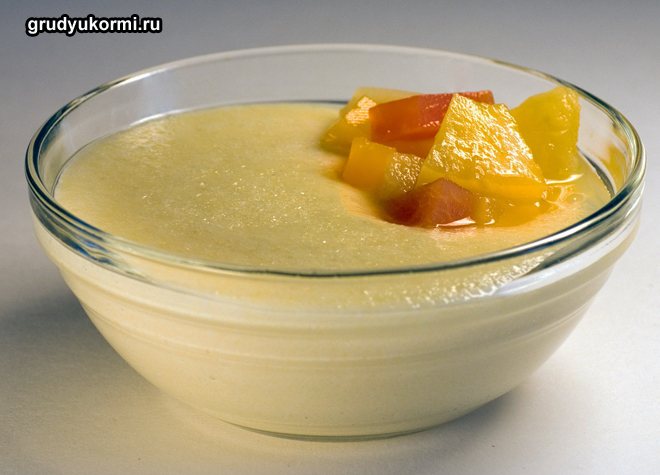
| Name | calorie content, kcal/100 g (with water/milk) | vitamins | microelements | age of the child when introducing porridge into the mother’s diet |
| rice | 89/101 | B, E, RR, N | potassium, iron, iodine, magnesium | 2-4 weeks |
| buckwheat | 90/336 | A, B, E, RR | magnesium, iron, calcium, silicon | From birth |
| corn | 90/350 | A, B, E, RR | potassium, phosphorus, magnesium, calcium | From 1-2 months |
| oatmeal | 88/102 | B, E, N, RR | potassium, magnesium, calcium, iron, phosphorus | From 2-3 months |
| millet | 90/184 | V, RR | iron, magnesium, calcium, manganese, copper | 5-6 months |
| wheat | 87/176 | B, A, C, E | potassium, phosphorus, magnesium | 5-6 months |
| barley | 76/111 | B, E, D, RR | calcium, magnesium, chromium, phosphorus | 6 months |
| barley | 324/367 | B, E, RR | potassium, phosphorus, calcium, iodine | 6 months |
| pearl barley | 109 | A, B, D, E, N, RR | calcium, zinc, potassium, selenium, magnesium | 6-7 months |
| semolina | 80/98 | B, E | potassium, magnesium, calcium, phosphorus, zinc | 9-10 months |
How to cook porridge correctly
It is recommended to use water to prepare porridge. If desired, the water can be diluted by half with milk. Do not consume salt or sugar in excess. In some situations, it is recommended to cook porridge without salt.
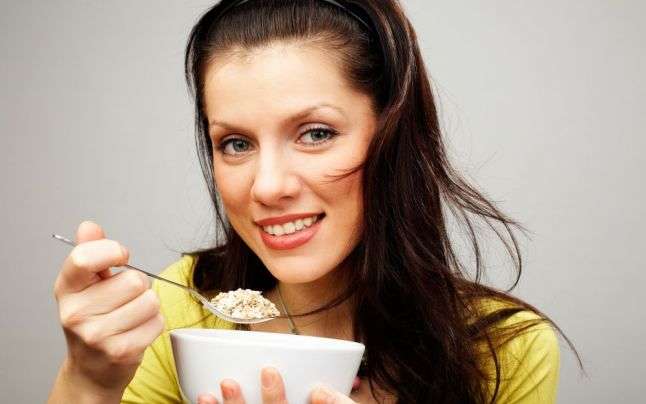
There are several recipes that are sure to benefit mothers and babies.
Porridge with pumpkin and dried apricots
Bulgur millet or rice are the cereals that are used in the recipe in question, depending on preference. You will need to prepare dried apricots, pumpkin and prunes; they are cut into pieces and poured into a container, followed by filling with cereal on top. You can add a little butter to the top layer.
After this, the composition is filled with water diluted with milk. The amount of liquid should be such that its level is higher, 2 fingers from the surface of the porridge. You can cook in a slow cooker or over low heat. The preparation is no different from fluffy rice. It is not prohibited to add, depending on taste preferences, sugar or a little salt.
Oatmeal
Oatmeal is a healthy porridge; its components are described above. As for the cooking method, you must first rinse it and put it on medium heat. After the water boils, the fire is reduced and the foam is removed.
It is not recommended to cover the pan during cooking, as this increases the risk that the mixture will escape. Only five minutes pass from the start of cooking to the end. When the porridge thickens, add oil to its composition and turn off the heat. Depending on taste preferences, sugar, dried apricots or apples are added to the composition.
Buckwheat
Porridge, which is used to normalize lactation. It is cooked in the oven or on fire. First, the cereal is washed with water. Take a cast iron pan and put a piece of butter into it, add cereal (2 cups). So put the composition in the oven, there it should brown a little.
Add three glasses of raw water and salt to taste. The composition is placed in the oven. If the porridge thickens and there is no water left, the oven turns off. The porridge is covered with a lid. It should stand in a hot oven for an hour.
There are other recipes for healthy porridges; they are prepared similar to the methods discussed above. A mother should choose a porridge for herself and her child and use it with pleasure, maintaining her health.
Harm and contraindications
The buns look appetizing and have a pleasant aroma. But at the same time, you should not eat the loaf in large quantities while breastfeeding, so as not to cause health problems.
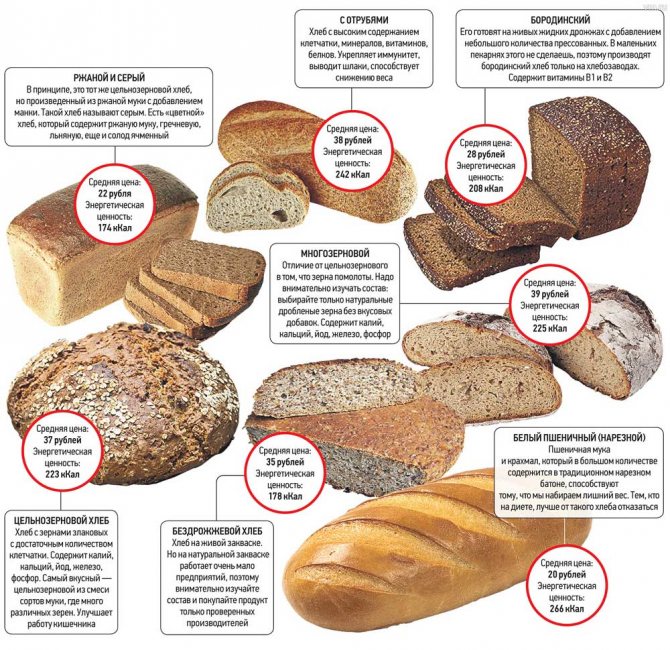
Harmful properties of bread during lactation:
- Manufacturers often add dyes and flavors to the dough to give the buns an attractive appearance. Such substances can provoke allergic reactions;
- yeast causes fermentation in the stomach, colic, bloating;
- if bread is stored incorrectly, mother and baby may experience problems in the gastrointestinal tract;
- Butter products have a high calorie content, since eggs, sugar, and yeast are used in their preparation. Excessive consumption leads to excess weight gain.
You should not consume large quantities of baked goods, as this worsens the functioning of the stomach and causes constipation. There are restrictions in which a nursing mother is prohibited from eating a loaf:
- increased gas formation;
- after caesarean section;
- for any gastrointestinal diseases.
In the absence of contraindications, the average daily requirement of bread for a nursing woman is no more than 200 grams. The best time to consume baked goods is the first half of the day.
Can I have pea porridge?
Legumes are not recommended to be introduced into the diet until a child is six months old. But peas are an exception. It helps cleanse the body, removes harmful substances, and improves the functioning of the digestive system.
Peas contain tryptophan, a substance that calms the nervous system. Doctors do not recommend including it in the diet in the first days of a baby’s life. In the early stages of breastfeeding, peas provoke gas formation in the woman and child, and therefore often cause colic.
